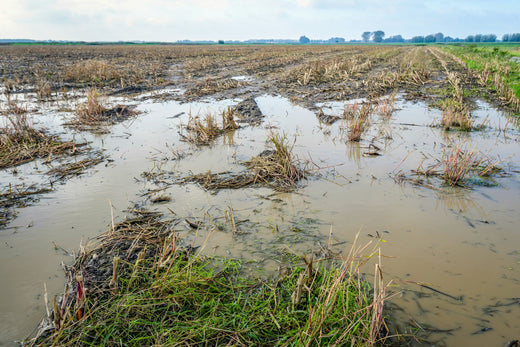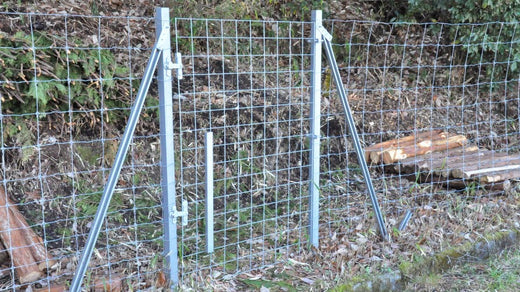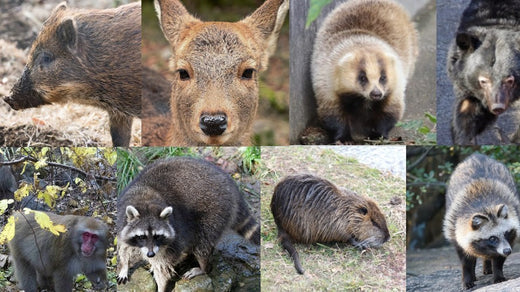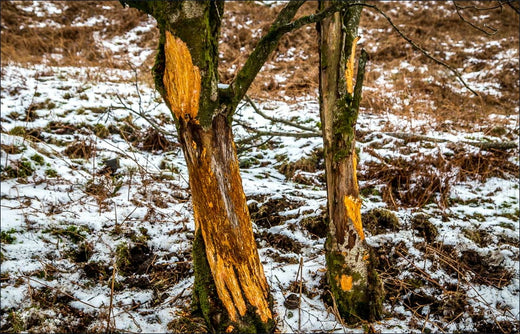Appropriate weather is indispensable for agricultural crops, but there are cases where crops are damaged due to the weather. In addition, on land rich in nature, there is a lot of damage caused by wild birds and animals, which is a troublesome problem for farmers. Crops can also be damaged by other diseases and pests.
These are unavoidable despite the development of agricultural technology and the efforts of farmers. As the first step in minimizing the damage, we will explain what kind of damage there is, what the scale is, and what kind of countermeasures should be taken.
Damage caused by natural disasters
Natural disasters are a major risk factor in agricultural management that is affected by nature.Crop damage due to typhoon
Characteristics and Scale of Damage
The most common cause of heavy rain and strong winds is the approach of a typhoon. Rice/vegetables, cereals/beans, fruit trees, industrial crops, etc. will be damaged by strong winds, flooding, flooding, etc. Last year, 2016, the average number of typhoons over the past five years was 26, of which 6 made landfall, the highest number.
The course of the typhoon is also different from the average year, and three typhoons landed in Hokkaido in one year, and a typhoon landed on the Pacific side of the Tohoku region, which is the first time since the Japan Meteorological Agency started typhoon observation in 1951 (Showa 26). , was the first time.
As a result, last year's typhoon-related damage to agriculture, forestry and fisheries was 159.6 billion yen, the highest figure in the last five years. The damaged area is approximately 78,300 hectares.

Number of Typhoons Landing in Recent Years and Amount of Damage to Agriculture, Forestry and Fisheries
Source: Ministry of Agriculture, Forestry and Fisheries websiteTyphoon precautions
It is necessary to carefully watch the course of the typhoon and take measures in advance if damage is expected.For paddy rice
Early maturing varieties that can be harvested should be harvested. In addition, mid- and late-maturing varieties should be deeply flooded to prevent lodging and drying. Check and repair clogged drainage channels in advance, and prepare for prompt drainage in the event of flooding.for vegetables and flowers
In the case of greenhouse cultivation, torn parts are repaired so that the wind does not blow into the greenhouse, and the house band and fittings are checked and tightened. For outdoor cultivation, reinforce and fix supports and flower nets.
For direct sowing and small ones, hold down the stems and leaves with a sticky material. In addition, to prevent lodging, firmly perform soil gathering.
Measures after a typhoon passes
Countermeasures after a typhoon has passed are hard work, but countermeasures that match the crops and conditions are necessary. Examples of countermeasures are described below.For paddy rice
If water is stagnant, try to drain it. In particular, if it is submerged, even just the tips of the leaves and tips should be exposed to the surface of the water. Rice plants that have been damaged by flooding have weakened their ability to regulate moisture.for vegetables and flowers
If the water is stagnant, we will try to drain it. Apply 500 to 1000 times liquid fertilizer to restore grass vigor. Harvest as soon as possible and re-sow in case of poor germination.Other natural disasters
Heavy rain, drought, snow, frost and hail
In Japan, which has four seasons, the rainy season is the season with the most rainfall. Due to the influence of low pressure passing over the stagnant seasonal rain front, landslide disasters and flood damage will occur due to heavy rain.
Last year, 2016, heavy rains from early June to mid-July caused extensive damage from the Tohoku region to Okinawa. As a result, the amount of damage to agriculture, forestry and fisheries was 60.9 billion yen, of which 36.6 billion yen was related to agriculture. 
Damage caused by heavy rain disaster (2016)
Source: Ministry of Agriculture, Forestry and Fisheries website
Furthermore, in 2017, heavy rains hit northern Kyushu, causing major damage mainly in Fukuoka and Oita prefectures, with damages to agriculture, forestry and fisheries exceeding 100 billion yen. Conversely, drought can cost billions of dollars in some years.
In addition, cold damage such as snowfall and frost causes crops to become cold, which causes withering and damage. Snow damage occurs mainly in the Tohoku, Kinki, and Chugoku regions due to heavy snow in winter. Also, when we think of frost, we imagine cold winters, but frost damage becomes a problem in spring and autumn.
In addition, crops may be damaged by hail.
Last year, in FY2016, due to heavy snow in winter, etc., snow damage occurred over a wide area, mainly in the Tohoku, Kinki, and Chugoku regions. 4.5 billion yen. As a countermeasure, we mainly introduce varieties that are resistant to cold damage, and we also improve cultivation methods for each crop.
Damage caused by earthquakes and volcanoes
In the case of a large earthquake, cracks and subsidences occur in farmland, and damage to waterways causes water outages. Damage such as fruit drop and withering of horticultural crops also occurs. In addition, equipment may be completely destroyed or partially damaged.
Last year, 2016, the Kumamoto Earthquake, which recorded a seismic intensity of 7, equivalent to that of the Great East Japan Earthquake, struck Kumamoto Prefecture and other prefectures in Kyushu. Of this, damage to agriculture, forestry and fisheries was 165.7 billion yen, including 51.5 billion yen to crops and 71.3 billion yen to farmland and agricultural facilities.
In addition, an earthquake of magnitude 6.6 occurred with its epicenter in central Tottori Prefecture, and the damage to agriculture, forestry and fisheries in Tottori Prefecture and Okayama Prefecture was 1.6 billion yen, of which 1.4 billion yen was related to agriculture. I went up. In addition, crops may be damaged by ash fall due to volcanic activity.Damage caused by wildlife
Damage caused by wild birds and animals to the agriculture, forestry and fisheries industries is called wildlife damage.
Wildlife pre-harvest kills the will to run a farm. In addition, as a result, it becomes a factor such as an increase in abandoned farmland, and has a serious impact on the entire region.
In recent years, the amount of crop damage caused by wild birds and animals has been hovering around 20 billion yen. 70% of all damage is caused by deer, wild boars and monkeys. In particular, the increase in damage by deer and wild boar is remarkable.
Damage caused by pests
Agricultural products are also damaged by disease and insect damage. There are various types of pests, but typical diseases include Fusarium head, gray mold, blast, powdery mildew, and downy mildew.
Pests include locusts, planthoppers, stink bugs, aphids, diamondback moths, maize weevil, leaf beetles, weevils, and mites. Infestations of pests can wreak havoc on crops.
For example, in fiscal 2013, more than 90,000 hectares of paddy fields in western Japan (equivalent to about 20% of the paddy fields in western Japan) suffered a tsubo wilt due to the brown planthopper, a type of planthopper. The amount of agricultural damage exceeding the yen came out. Since pests spread across prefectural borders, it is necessary for each prefecture to cooperate in controlling them.
if you are a victim
There is an insurance system called Agricultural Mutual Aid, which pays mutual aid money when crops, livestock, or gardening facilities are damaged by natural disasters. Please contact your local Agricultural Mutual Aid Association, etc. for specific details and procedures for joining the mutual aid.
<Click here for a list of Nosai federations and union addresses>

 箱罠
箱罠
 くくり罠
くくり罠
 パーツ類
パーツ類
 電気柵
電気柵
 自作キット
自作キット
 防獣グッズ
防獣グッズ
 監視カメラ
監視カメラ




 box trap
box trap
 tying trap
tying trap
 enclosure trap
enclosure trap
 Prevention and avoidance goods
Prevention and avoidance goods
 electric fence
electric fence
 trap surveillance camera
trap surveillance camera
 transportation goods
transportation goods
 Trap detection sensor
Trap detection sensor
 hunting supplies
hunting supplies
 hunting books
hunting books
 Anti-bird goods
Anti-bird goods
 Agricultural materials/machinery
Agricultural materials/machinery
 boar
boar
 deer
deer
 Kyon
Kyon
 monkey
monkey
 raccoon
raccoon
 Badger
Badger
 palm civet
palm civet
 raccoon dog
raccoon dog
 nutria
nutria
 mouse or rat
mouse or rat
 Mole
Mole
 bear
bear
 pigeon
pigeon
 Crow
Crow







